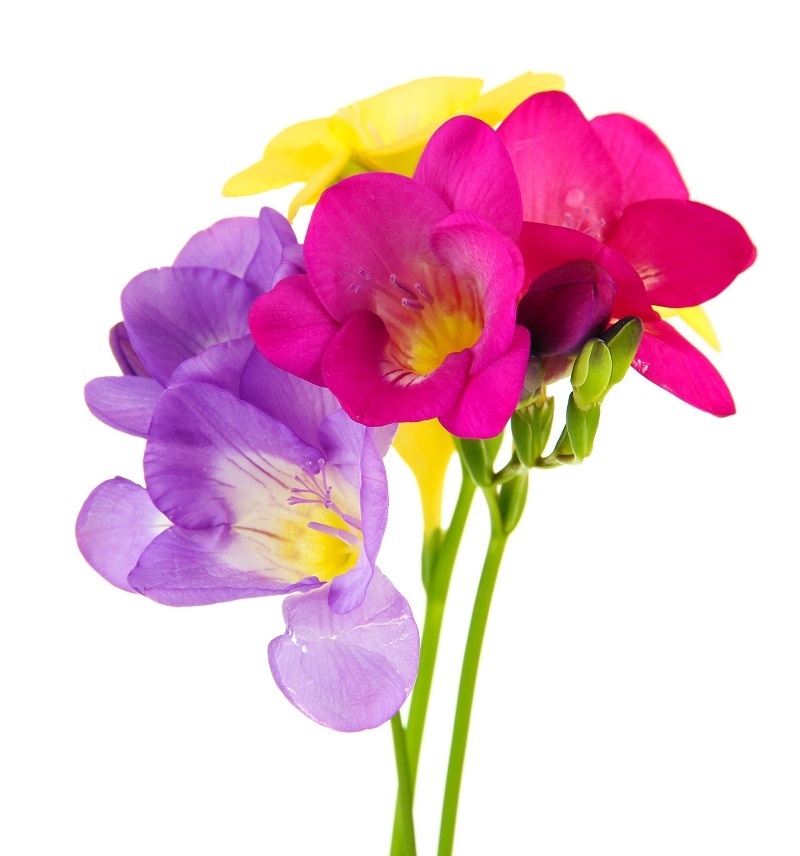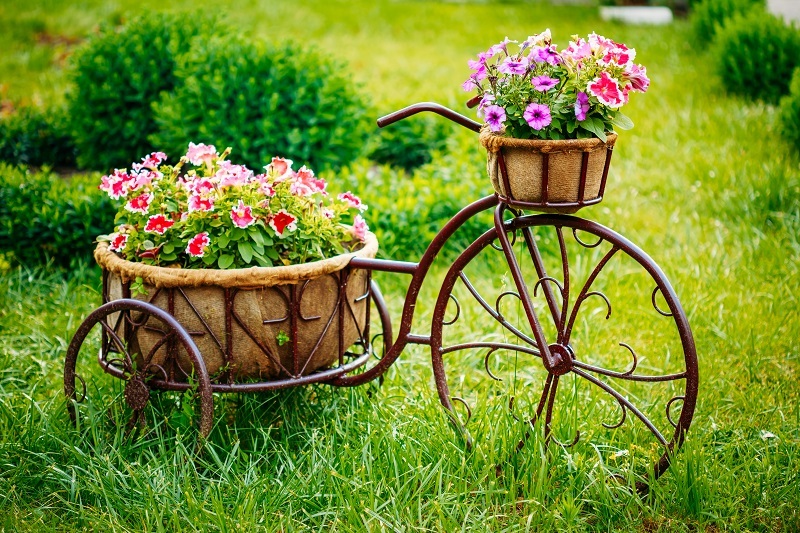Comprehensive Tips for Optimal Hydrangea Care
Posted on 18/08/2025
Comprehensive Tips for Optimal Hydrangea Care
Hydrangeas are renowned for their lush foliage and vibrant blooms, making them a favorite choice for gardeners worldwide. Whether you're a seasoned horticulturist or a novice plant enthusiast, optimal hydrangea care is essential to achieve magnificent, long-lasting flowers. In this in-depth guide, you'll discover proven techniques, helpful insights, and expert advice to nurture your hydrangeas and enjoy their beauty season after season.
Understanding Hydrangeas: Types and Varieties
Before delving into care routines, it's important to familiarize yourself with the major types of hydrangeas:
- Bigleaf Hydrangea (Hydrangea macrophylla): Known for their colorful mophead and lacecap flowers.
- Panicled Hydrangea (Hydrangea paniculata): Recognizable by conical, often white or pink blooms.
- Oakleaf Hydrangea (Hydrangea quercifolia): Unique oak-shaped leaves and white flowers that turn pink with age.
- Smooth Hydrangea (Hydrangea arborescens): Compact shrubs with large, round white flowers.
- Climbing Hydrangea (Hydrangea anomala petiolaris): Vigorous climbers boasting fragrant, lacy blooms.
Identifying the species you have is crucial because hydrangea care requirements can vary significantly between types.

Optimal Conditions for Hydrangea Growth
Choosing the Right Location
Location is fundamental to successful hydrangea cultivation. Consider the following tips for placing your hydrangeas:
- Sunlight: Most hydrangeas flourish with morning sun and afternoon shade. Panicle varieties tolerate more sun, while bigleaf types prefer partial shade.
- Protection: Shelter your plants from harsh winds and midday sun to avoid stress and wilting.
- Spacing: Allow adequate space (at least 3 feet apart) for air circulation, reducing the risk of fungal diseases.
Soil Considerations
The best soil for hydrangeas is moist, well-draining, and rich in organic matter. Test your soil's pH to ensure it aligns with your hydrangea's needs. Bigleaf hydrangeas are particularly sensitive to soil pH, which influences flower color:
- Acidic Soil (pH below 6): Produces blue blooms.
- Alkaline Soil (pH above 7): Produces pink or red blooms.
For optimal results, amend your soil with compost or well-rotted manure annually.
Watering Hydrangeas the Right Way
Understanding Hydration Needs
Hydrangeas are named for their love of water (from the Greek "hydor" for water), but even these moisture-loving beauties can suffer from over- or under-watering. Here's how to maintain optimal moisture levels for hydrangeas:- Consistent Watering: Water deeply at the base 1-2 times per week, more often during hot, dry spells.
- Morning Routine: Water early to minimize evaporation and discourage disease.
- Mulching: Apply a 2-3 inch layer of organic mulch to conserve moisture and regulate temperature.
- Avoid Overwatering: Ensure the soil is never soggy, as this can cause root rot and stunted growth.
Fertilizing for Vigorous Hydrangea Growth
Correct nutrition is key to lush foliage and abundant blooms. Best practices for fertilizing hydrangeas include:
- Timing: Feed your hydrangeas in early spring as buds emerge, and again in early summer if needed.
- Type: Use a balanced, slow-release fertilizer (like 10-10-10) or a formula specifically for flowering shrubs.
- Amount: Apply according to package directions. Overfertilizing can reduce flowering and cause leafy growth.
Remember, different species have distinct needs. For example, excessive nitrogen will promote foliage but limit flowers in bigleaf varieties.
Pruning Hydrangeas for Health and Beauty
Why Pruning Matters
Proper pruning encourages healthy growth, shapes your plant, and stimulates prolific flowering. However, not all hydrangeas bloom on new wood (current year's growth) or old wood (last year's growth), so knowing your type is vital.
Best Pruning Practices
- Hydrangeas Blooming on Old Wood (Bigleaf & Oakleaf): Prune immediately after flowering. Remove up to one-third of the oldest stems at ground level to rejuvenate the shrub and improve air flow.
- Hydrangeas Blooming on New Wood (Panicled & Smooth): Prune in late winter or early spring before new growth begins. Cut back stems to a few inches above the ground for compact, abundant blooms.
- Remove Deadwood: At any time, cut away spent flowers and any dead, diseased, or damaged stems.
Apply clean, sharp tools to prevent disease transmission and sterilize between cuts when dealing with sick plants.
Pest and Disease Management for Hydrangeas
Common Pests
- Aphids: Small, sap-sucking bugs that cluster on stems and leaves. Control with a blast of water or insecticidal soap.
- Spider Mites: Tiny pests causing stippling or webbing on leaves. Encourage beneficial insects or use horticultural oil.
- Slugs and Snails: Leave ragged holes in foliage. Install barriers or collect pests by hand, especially in the evening.
Disease Prevention
- Powdery Mildew: Promote airflow by spacing plants properly. Water at the base to keep foliage dry.
- Leaf Spot: Clean up fallen debris around the plant and prune to increase sunlight penetration.
- Root Rot: Avoid waterlogged soil by ensuring proper drainage.
Early detection and prompt action keep hydrangea problems at bay. When chemicals are necessary, always follow label instructions to minimize environmental impact.
Changing Bloom Color: Soil pH Tricks
One of the most exciting aspects of bigleaf hydrangea care is the ability to change flower color by adjusting soil pH. Here's how you can influence your hydrangea's palette:
- Blue Flowers: Maintain acidic soil (pH 5.2-5.5) by adding granular aluminum sulfate or incorporating organic matter like pine needles.
- Pink Flowers: Raise pH to around 6.0-6.2 by working in garden lime or wood ash.
Changes won't happen overnight--expect results after one full growing season. Always test soil before making adjustments, and use recommended application rates.
Overwintering Hydrangeas: Cold-Weather Protection
Hydrangeas can be vulnerable to frost and winter winds, especially in colder zones. Follow these tips to ensure optimal hydrangea health during the winter:
- Apply Mulch: Add a thick (4-6 inch) layer of bark mulch or straw around the base to insulate roots from temperature fluctuations.
- Cover with Burlap: For highly sensitive varieties, wrap the shrub in burlap or a frost cloth, especially in exposed sites.
- Avoid Late Feeding: Stop fertilizing by midsummer to prevent tender growth prone to winter burn.
- Container Protection: Move potted hydrangeas into a protected area or insulate pots to avoid freeze damage.
Hydrangea Care Calendar: Monthly To-Do List
Staying on schedule ensures superior results. Here's a month-by-month hydrangea care plan:
- Early Spring: Prune as needed, start feeding, and check soil moisture.
- Late Spring: Mulch, monitor for pests, and adjust soil pH if experimenting with color.
- Summer: Maintain regular watering, deadhead spent blooms, and keep an eye on moisture levels.
- Fall: Stop feeding, tidy up beds, and apply extra mulch ahead of frost.
- Winter: Protect sensitive plants and check insulation periodically.
Hydrangea Propagation: Expanding Your Garden
Propagating hydrangeas is a rewarding way to grow your collection or share with friends. Two primary methods are stem cuttings and layering:
- Stem Cuttings: In late spring, cut a healthy, non-flowering stem below a leaf node. Remove lower leaves and dip in rooting hormone. Plant in moist potting mix and cover with plastic to maintain humidity until roots develop.
- Layering: Bend a low-growing branch to the ground, secure it with a pin, and cover with soil. Roots should form after a few months; then, sever the new plant and transplant.

Top FAQs for Optimal Hydrangea Maintenance
How much water do hydrangeas need?
Hydrangeas prefer moist, but not soggy, soil. Typically, they require about 1 inch of water per week, more frequently during hot spells. Water deeply to encourage strong root systems.
When is the best time to prune my hydrangeas?
Pruning time depends on the type of hydrangea. For those that bloom on old wood (macrophylla and quercifolia), prune just after flowering. For new wood bloomers (paniculata and arborescens), prune in late winter or early spring.
Why aren't my hydrangeas blooming?
Bloom failure may result from late frosts, improper pruning, excess nitrogen, or inadequate sunlight. Identify your plant's blooming habit and adjust care accordingly.
Can hydrangeas grow in containers?
Yes! Use a roomy pot with drainage holes and high-quality potting mix. Water more often and monitor nutrients, as containers dry out faster.
Conclusion: Enjoying Optimal Hydrangea Health and Beauty
Growing stunning hydrangeas is an art and a science, but with these comprehensive hydrangea care tips, you're well-equipped for success. Remember to match your care routine to your hydrangea species, keep an eye on soil and moisture, and prune with confidence. With attention and patience, your hydrangeas will reward you with gorgeous blooms and vibrant, healthy growth all season long.
Ready to transform your garden? Start implementing these optimal hydrangea care strategies today, and watch your landscape burst with color and life!
Latest Posts
Heartfelt Blooms for Special Birthday Moments
Stay Productive with Easy-Care Office Plants
Unlock the Secrets of Poinsettia Durability







